
By combining LEDs with custom phosphors, we can achieve full spectrum lighting for a wide range of products from horticultural grow lights to UV/Vis/NIR spectroscopy and microscopy as well as various security, imaging and tagging applications. We can even achieve an artificial sun LED-based lamp that simulates the behavior of the solar spectrum or sunlight at different times and altitudes.
LED phosphors can help produce custom solutions for a wide range of scientific and commercial applications. Phosphor technology can be combined with specific LEDs to achieve unlimited spectral customization and color tuning. The most common type of LEDs used to drive phosphors used in solid-state lighting are blue LEDs since that can eliminate the need for blue phosphors. However, in order to achieve true full spectrum lighting, ultraviolet (UV) or violet LEDs will be required.
With remote phosphor technology, it is possible to create and customize using phosphor films your own multi-channel full spectrum light engine and use it to experiment with an unlimited number of colors and across the ultraviolet (UV), visible and even infrared (IR) parts of the spectrum. This approach will save significantly on light engine development, implementation, and manufacturing cost since it does not require expensive high power multi-channel LED controllers driving a large selection of red, green, yellow, blue, and white (RGYBW) devices or diodes. All colors (including non-visible ones) can be generated using phosphors combined with blue or UV/violet LEDs. We can produce simple-to-use and efficient phosphor films for blue, violet, and ultraviolet LEDs using any existing phosphor material.
Below are some custom spectra that were designed and implemented for specialty full spectrum lighting and instruments using phosphor-converted LEDs (pcLEDs). The phosphor material can be placed at a remote location or it can be deposited/dispensed directly on the die inside the LED package. Another common and low-cost approach would be to attach a thin phosphor film on top of commercially available chip-on-board (COB) or surface-mount devices (SMDs).
The example below illustrates a full spectrum lamp achieved using a single 385nm LED and phosphors.
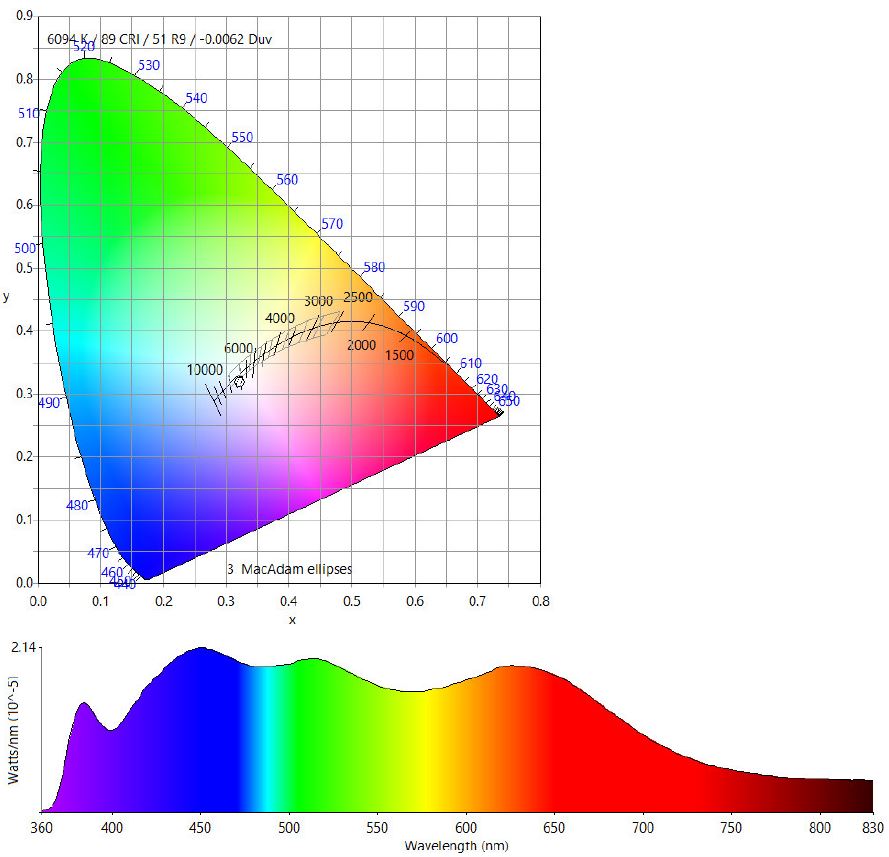
The example below is a broadband lamp achieved using a single 450nm LED and phosphors.
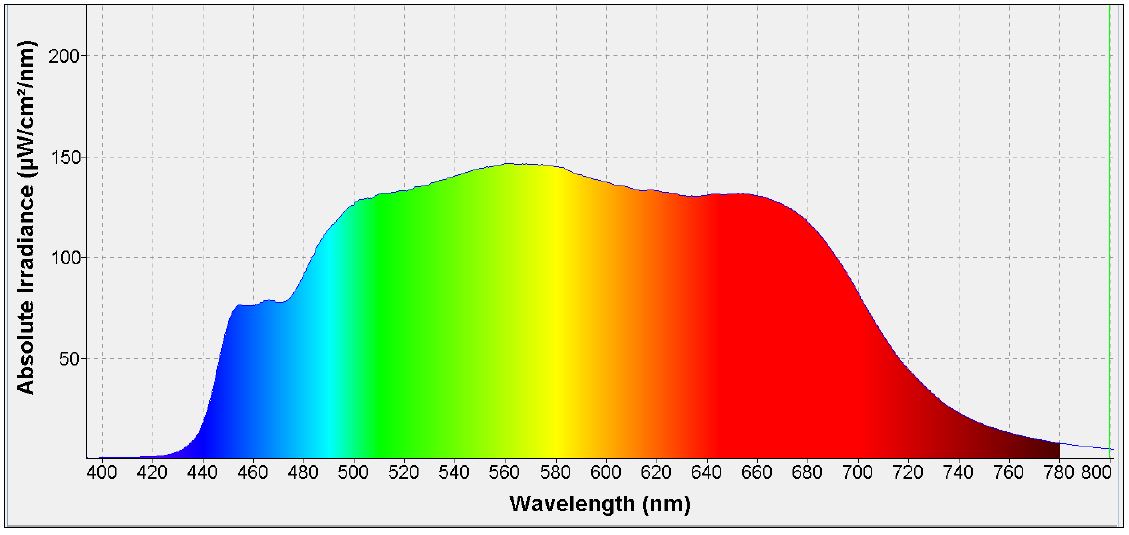
Full spectrum lighting achieved using a single 430nm LED and phosphor mixture.
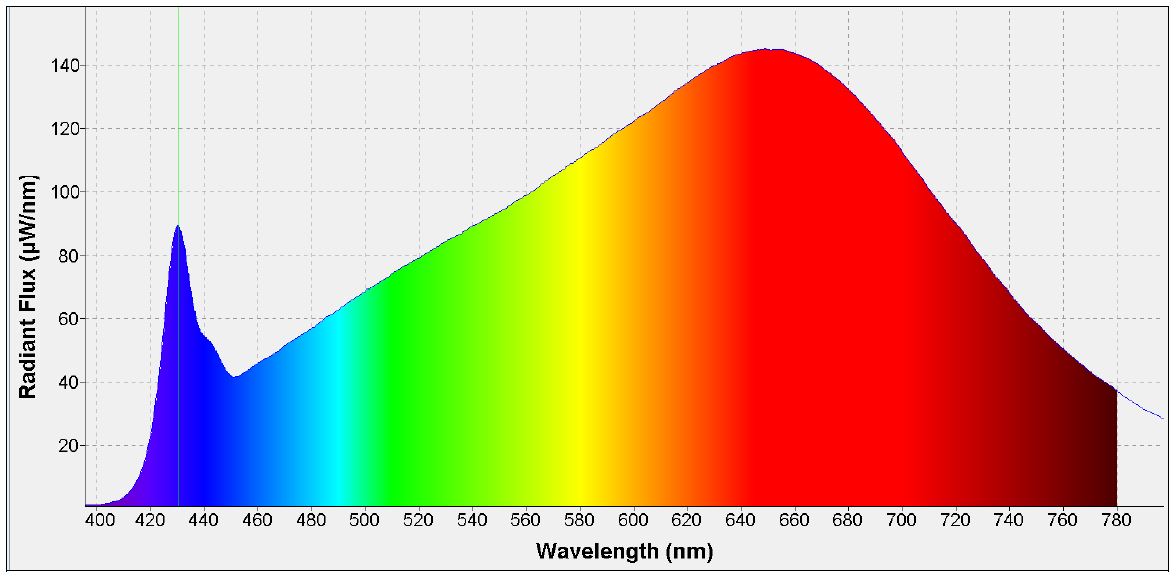
Here’s an ultraviolet, visible, and near-infrared device developed for a spectroscopy application using 385nm LED and phosphors.
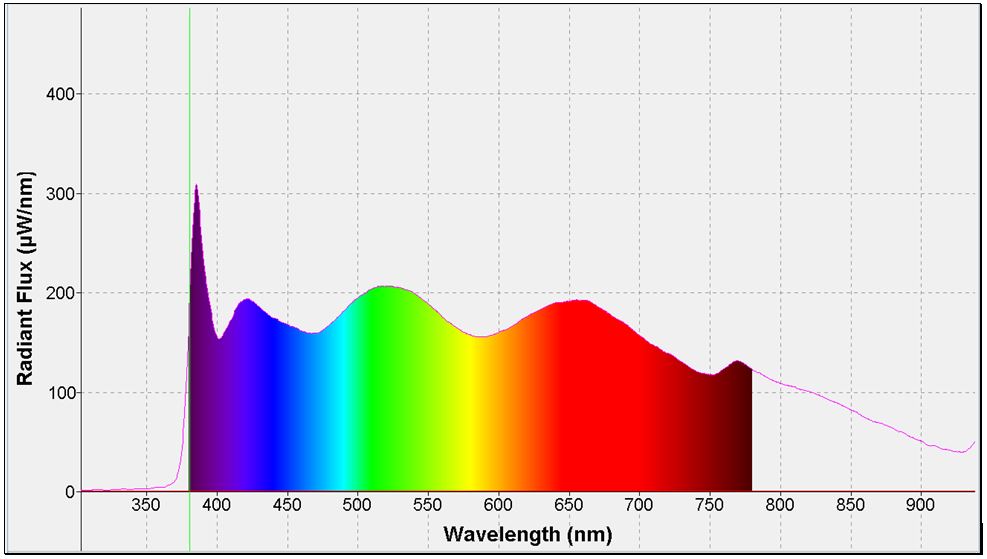
By adding additional phosphors and LEDs, it is possible to also cover the UVC, UVB/UVA, as well as the short wave infrared parts of the spectrum.
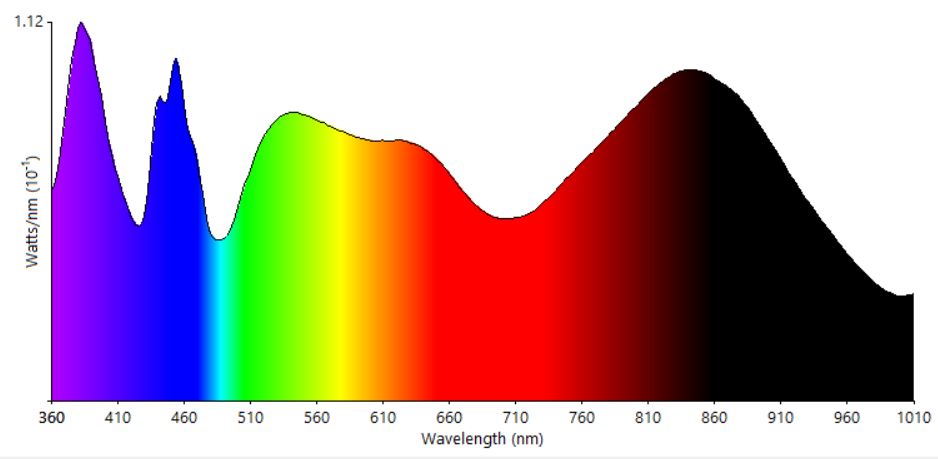
UV-Vis-NIR LED Engine
We can also produce custom spectra for horticultural lighting applications using phosphors and LEDs.
_____________________________________________ _______________________________